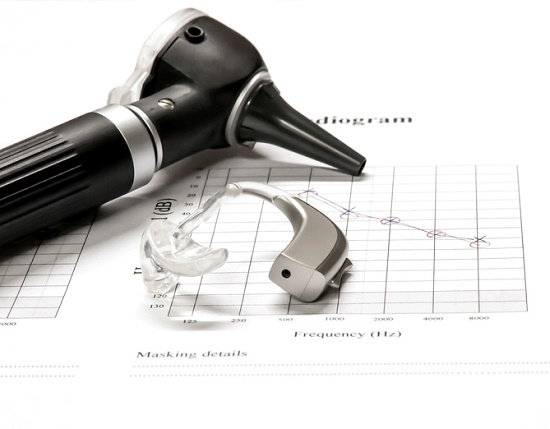
Are you planning on investing in hearing aids?
If the answer is yes, it can seem intimidating at first. There are several options out there, and the perplexing terminology doesn’t help.
That’s why we’re going to summarize the most common and significant terms, so when you talk with your hearing professional you’ll be prepared to find the ideal hearing aid for you.
Hearing loss and testing
High-frequency hearing loss – this is the most common type of hearing loss. Patients with high-frequency hearing loss have the most difficulties hearing higher frequency sounds, such as the sounds of speech.
Sensorineural hearing loss – this type of hearing loss occurs when there is injury to the nerve cells of the inner ear. This is the most prevalent type of permanent hearing loss brought on by exposure to loud noise, the aging process, genetics, or other medical ailments.
Bilateral hearing loss – hearing loss in both ears, which may be symmetrical (the same degree of loss in both ears) or asymmetrical (different degrees of loss in each ear). Bilateral hearing loss is in most cases best treated with two hearing aids.
Audiogram – the chart which provides a visual depiction of your hearing testing results. The vertical axis measures decibels (volume) and the horizontal axis measures frequencies (pitch). The hearing specialist records the lowest decibel level you are able to hear at each frequency. If you necessitate higher volumes to hear higher frequencies, your audiogram will show a pattern of high-frequency hearing loss.
Decibel (dB) – the unit used to measure sound level or intensity. Regular conversation registers at approximately 60 decibels, and long-term exposure to any sound above 80 decibels could result in irreversible hearing loss. Seeing as the scale is logarithmic, an increase of 6-10 decibels doubles the volume of the sound.
Frequency – represents pitch as measured in hertz. Picture moving up the keys on a piano, from left to right (low-frequency/pitch to high-frequency/pitch).
Threshold of hearing – The lowest decibel level that can be detected at each individual frequency.
Degree of hearing loss – Hearing loss is generally characterized as mild (26-40 dB loss), moderate (41-55), severe (71-90), or profound (91+).
Tinnitus – a chronic ringing or buzzing in the ears when no external sound is present. Often an indication of hearing injury or loss.
Hearing aid styles
Digital hearing aid – hearing aids that incorporate a digital microchip, used to custom-program the hearing aids to complement each individual’s distinct hearing loss.
Hearing aid style – the type of hearing aid defined by its size and location relative to the ear. Core styles include behind-the-ear, in-the-ear, and in-the-canal.
Behind the ear (BTE) hearing aids – the majority of hearing aid components are contained inside of a case that rests behind the ear, connected to an earmold by a clear plastic tube. Mini-BTE hearing aids are also available.
In the ear (ITE) hearing aids – the hearing aid parts are enclosed inside of a case that fits in the external part of the ear.
In the canal (ITC) hearing aids – the hearing aid components are enclosed in a case that fits inside of the ear canal. Completely-in-the-canal (CIC) hearing aids are also obtainable that are virtually invisible when worn.
Hearing aid parts
Earmold – a piece of plastic, acrylic, or other soft material that is formed to the curves of the individual’s ears, utilized for the fitting of hearing aids.
Microphone – the hearing aid component that picks up external sound and converts the sound waves into an electrical signal.
Digital signal processor – a special microprocessor inside a hearing aid that can manipulate and enhance sound.
Amplifier – the component of the hearing aid that boosts the volume of sound.
Speaker – the hearing aid part that delivers the enhanced sound to the ear.
Wireless antenna – available in specific hearing aids, allowing for wireless connectivity to compatible gadgets such as smartphones and music players.
Hearing aid advanced features
Variable programming – hearing aid programming that permits the user to adjust sound settings according to the environment (e.g. at home versus in a busy restaurant).
Directional microphones – microphones that can focus on sound originating from a specific location while minimizing background noise.
Telecoils – a coil placed inside of the hearing aid that enables it to hook up to wireless signals originating from telephones, assistive listening devices, and hearing loops installed in public venues.
Noise reduction – functionality that assists the hearing aid to distinguish speech sounds from background noise, resulting in the augmentation of speech and the inhibition of distracting noise.
Bluetooth technology – permits the hearing aid to communicate wirelessly with several devices, such as cell phones, computers, audio players, and other compatible devices.
Not sure which features you need, or which you could live without? Let us help you find the best hearing aid for your distinct requirements. Give us a call today!